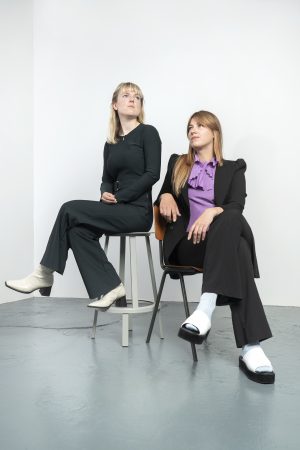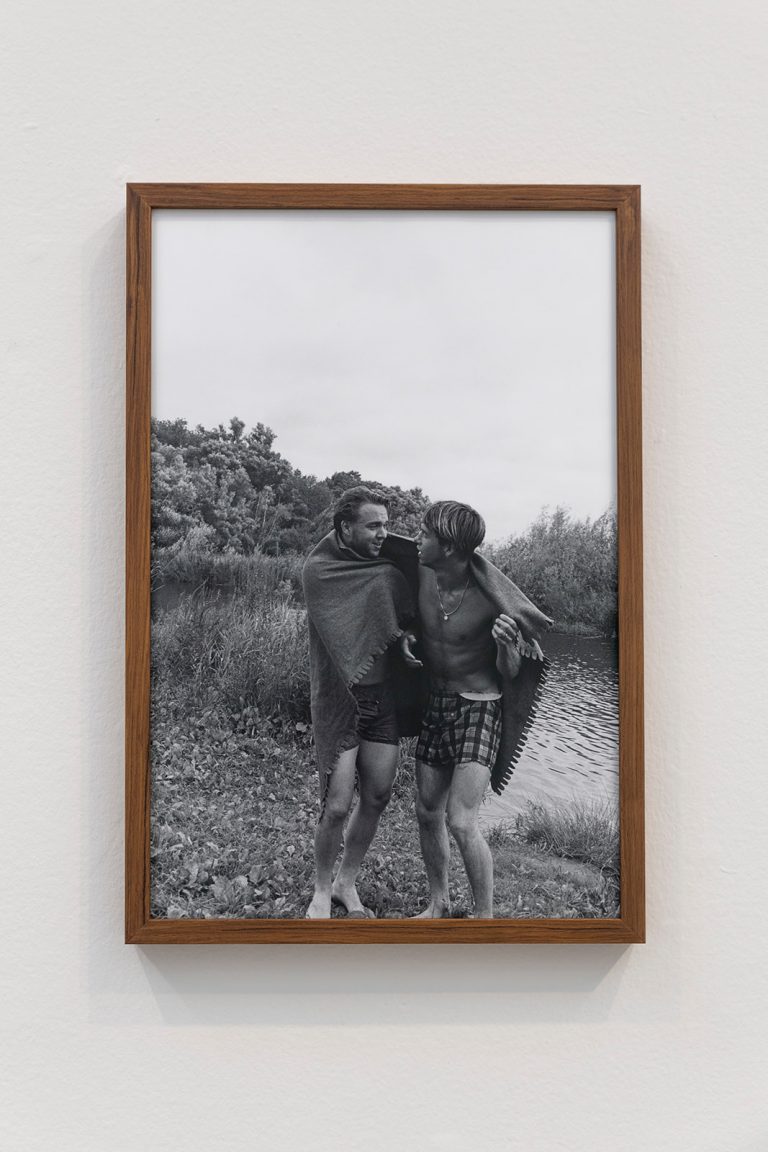
Seppe Vancraywinkel is one of the participants of the 9th edition of Currents. He studied photography at the Luca School of Arts. In Mother(Land), Seppe presents with Within the bubble of surroudings black and white images in which he captures the playfulness and intimacy of his childhood friends. “On the one hand there is speed in the making process, on the other hand I need a certain slowness.”
The title of the exhibition is Mother(Land). What does that mean to you?
The curators (Lieneke Hulshof and Fenne Saedt) said they were looking for different interpretations of someone’s motherland. Where do you come from? Who are your parents? What is your background? Even though I don’t literally focus on my family, Within the bubble of surroudings is about my identity and the boys I grew up with in my native region.
Currents is a group exhibition of ten recently graduated artists.
The special thing about Currents is that so many disciplines come together. Installations, ceramics, costumes… For me, it was the first time. I had already taken part in photography exhibitions, but here you really felt a substantive connection between the works. Everyone was working on the same theme. That creates a bond.
Did you feel you were working towards something together?
It clicked immediately between us. During a weekend, we didn’t only get to know each other, but also the organising art houses (Z33 and Marres). We got a tour of their beautiful buildings and followed interesting workshops.
What did those workshops entail exactly?
During the first workshop, we got to know each other better and there was room for self-reflection. During the second, we prepared for the Artist Talks, where we learned how to speak in front of an audience. That workshop gave me insight into the way I tell my story. I’m grateful that this was part of our programme, because it meant I was well prepared for the Artist Talks on the opening night.
Are these skills you didn’t learn at school?
During your study programme, you have to present your work in front of a jury, but in the end it is not the same. After a while, you know your teachers and within the safe walls of the school environment you can do little wrong. For an unfamiliar audience, of course, it is different. Our workshop tutor emphasised the importance of the way you present something. My work is pure and spontaneous, so I try to present it that way.
Speaking of your work, are you presenting an exact copy of your graduation project?
No, because my project is a selection of 100 images. When I exhibit, I look for a specific link between my photos. Within the bubble of surroudings is about moments with my childhood friends when time seems to stand still and all insecurities and worries disappear. It is a utopia, a place where I would always like to be.
My graduation project focused more on the relationship between man and nature, but for Mother(Land) I enjoyed making a new selection. It is always fun to delve into your own material. The photos hanging in Z33 focus on the intimacy and physicality between my friends.




You work with analogue photography. Is that a deliberate choice?
It is indeed an essential part of my work. I take photographs very quickly and intuitively. I am part of the group of friends, I experience things together with them. So I just need to be able to press the button and put the camera away. Click and go. Analogue photography fits in very well with that. There is no way back. The image you made is hidden in the film reel. On the one hand, there is speed in the creative process, but on the other hand, I need a certain slowness. I develop my images a few days or weeks later in the darkroom and rediscover them there. I look at them again and only then do I begin to direct, select and interpret.
Apart from analogue, your images are also always black and white. Is there a special reason for that?
That is a way to protect my dreamlike world. Colour is reality for me. I see colour all day long, and I love it, but black and white is a protective layer for me. My images are more about the experience, the story. Colour would be a distraction.
In Z33 your presentation stands out. The photos are not the same size and you hang very large ones next to very small ones. Why do you do that?
By photographing in black and white, there is always a certain graininess in the photos. When I enlarge my images, those grains become as big as marbles. That gives them an unreal feeling, almost like paintings. So that choice is mainly an aesthetic one.
I never hang up my pictures in a classical way. As I said before, I work intuitively when I am photographing. I do the same when I hang them up. With my friends there is a certain energy, we are very playful. In my work, it strikes me that we have a lot of highs and lows. Both literally and figuratively. In mountains, under water, jumping off bridges… I try to translate that in my presentation. By using different sizes, I want to stimulate that playfulness and movement.
You also had a residency at FLACC. What exactly did you do there?
I came up with the idea of printing an enormous photograph. FLACC had a digital printer with a 10-metre roll, so we could do something with that. The result is a metres-high photograph that immediately catches the eye when you step into the room.
After all those preparations, the big opening night followed. How did you experience that?
That was a nice experience too. We had already seen some of each other’s work during the build-up, but of course the opening is different. Then the whole show is finished and the work is exhibited publicly. I was happy to see that the exhibition was right in its entirety. We owe that to the curators. They really hammered on that theme and that is literally visible. The artworks are very well connected. I find it interesting that my work is displayed opposite that of Doris Kopla. Her colourful paintings about her friends and family are facing my black and white images about my friends. That gives a pleasant visual contrast.
You clearly had a positive feeling about your participation. What made Currents different for you?
I found it very professionally organised, as if we had been in the business for years. I noticed that in the quality of the workshops and team buildings. At previous exhibitions, I had to arrange everything myself, from transport to communication. This was the first time, for example, that my work was insured. Through this project, I have also taken professional steps. I became self-employed, got a budget to make art, had a residency and above all got to know wonderful people. Currents gave me the opportunity to spread my art and expand my world.
Currents #9: Mother(Land) runs from 30.01 to 06.03.22 in Z33

Related item
Geprikkeld door wat je hier leest?
Blijf op de hoogte of laat je verwonderen.
Schrijf je in op onze nieuwsbrief.



